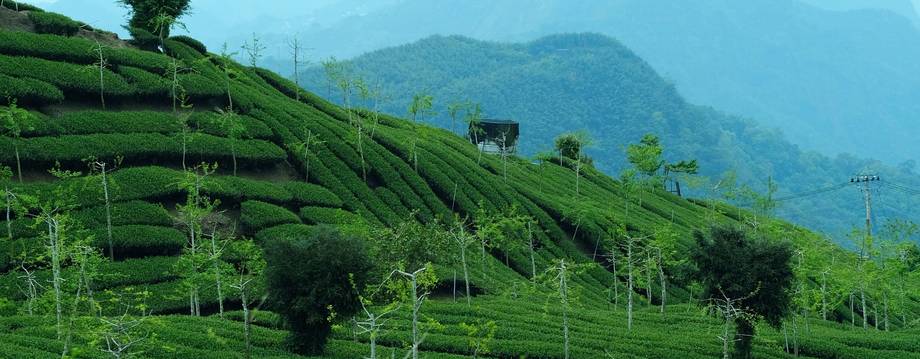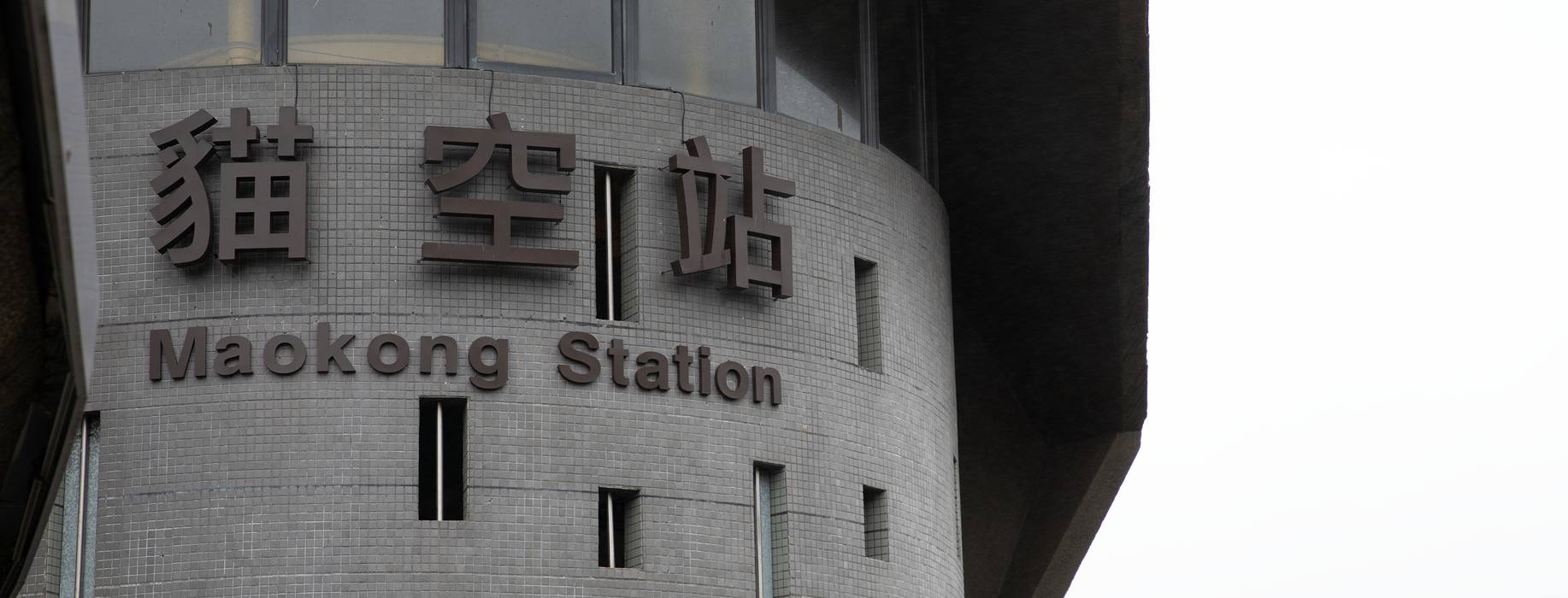'A ticket to the top, please'
A great source of national pride and an exceptional storytelling tool, tea offers drinkers a taste of Taiwanese terroir
Robyn Gilmour
Saturday 31 May 2025

This article is from
Taiwan
issue 118
Share this article
We drink a lot of tea in the UK, but our engagement with the drink tends to be limited to pouring boiling water on a teabag. Sure, you might have a favourite brand, or a preference for breakfast tea or Earl Grey, but overwhelmingly we’re ignorant to what kinds of plants were grown where, by whom, and how the various components of our favourite blend is processed.
Even if you decide to forgo the Tetleys, Twinings, or Yorkshire Tea and venture into a speciality tea shop, you’re likely to be told that there are six different kinds of tea; white tea, green tea, yellow tea, oolong tea, black tea, and pu-erh tea. However, whether a tea is green or oolong depends on how the tea leaves are processed, and doesn’t say anything about the plant those leaves grew on, or its surrounding terroir.
In Taiwan, tea is categorised according to what cultivar of plant is grown, how it’s processed, and where the final product is made; whether tea is produced in a given region, or elsewhere using production methods originating in said region, can make a substantial difference to the final price. The resulting multitude of overlapping categories and subcategories gives rise to eight speciality Taiwanese teas; Bi-Lo-Chun, Wenshan Pochong, High Mountain Oolong, Tongding Oolong, Tieh-Kuan-Yin, Oriental Beauty, Red Oolong, and Black.
Given the centrality of tea in everyday life in Taiwan, it's little surprise that such close attention is paid to its variations, and to the circumstances in which it is consumed. Are you hosting a visitor? Is it someone’s birthday? Have you been hard at work and worked up a thirst? Traditionally, each occasion would warrant a different tea.

PHOTO: Taipei Tea Promotion Center
Where tea was once a major Taiwanese export, in recent years the domestic market has consumed the bulk of what is produced, making it a rare find outside the country and a great source of pride within it. Huge emphasis is placed on the promotion and advancement of tea in Taiwan today. Farms offer tours to the public, and just south of Taipei, the Tea Promotion Centre is a must-visit for anyone with time to spend in the city.
Catch a bus to Taipei Zoo and you can buy a ticket for the Maokong Gondola, a cable car that takes visitors up and over several steep ridges, shrouded in luscious, subtropical forest, to Maokong. It takes about 45 minutes to reach the final station, where you alight for the Tea Promotion Centre, but the journey alone is worth a visit for the spectacular view over Taipei, and the surrounding hillside tea farms. Mei-Jia Tea Garden is perhaps the most popular nearby farm, and is well equipped to accommodate and educate tourists.
Tieh-Kuan-Yin is the most popular variety of tea produced around Maokong, though it originated in the Anxi and Wuyi regions of China. During the Guangxu Emperor’s reign over the Qing Dynasty (late 18th to early 19th century), brothers Zhang Naimiao and Zhang Naigan brought Tieh-Kuan-Yin tea plants from Anxi to Taipei, and began cultivating them on Mt. Zhanghu in the Muzha District that Maokong calls home.
Confusingly, ‘Tieh-Kuan-Yin’ is a term used jointly to refer to tea made exclusively from the Tieh-Kuan-Yin plant, and tea made from the Tieh-Kuan-Yin manufacturing method. If you’re looking for the purest form of this tea — made using both plant and method — keep an eye out for Zhengcong Tieh-Kuan-Yin.
Tieh-Kuan-Yin tea leaves are hard to pick, as the plant’s stem and branches are thick and leaves are comparatively sparse, but packed with flavour. The spring harvest is widely considered as the most desirable crop, but an autumn harvest also yields a strong aroma, just with a weaker and less complex taste.

PHOTO: Eric Barbeau
After the tea leaves are withered, they undergo a controlled stirring process (the leaves are agitated, usually by shaking, bruising and/or rolling) to encourage oxidation and increase the degree of fermentation. A primary difference between Tieh-Kuan-Yin tea in Anxi and Muzha is that the Muzha variety is 30-40% oxidised, whereas Anxi preparation just oxidises the leaves by 20-30%. Oxidation here refers to the process of breaking the tea leaves to expose the enzymes inside to the air. In the presence of oxygen, these chemicals take on new, deeper, and more complex flavours and fragrances.
Rolled and dried tea leaves then undergo repeated roasting until components in the tea take on a unique fragrance and flavour. When steeped, a reddish brown tea is produced that remains fragrant and sweet, with a mellow, roasted nut flavour even after several top-ups of hot water. In Anxi, the finished product more closely resembles a green tea, and is more floral.
Beer and whiskey drinkers will already be familiar with many of the key flavour and aroma reference points needed to enjoy and appreciate the complex character of Taiwanese tea. ‘Floral’, ‘fruity’, ‘honeyed’, ‘nutty’ and ‘roasted’ are all terms we’re familiar with, as are indicators like ‘smooth’, ‘creamy’ and ‘astringent’, when used to describe a drink’s mouthfeel. So, if you find yourself in Taiwan, enjoying a craft beer or local whiskey, why not extend your exploration to tea, and get a taste for local terroir.
Share this article

